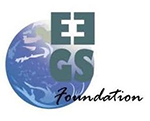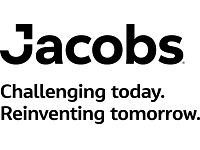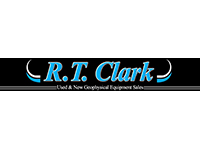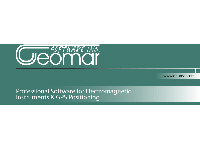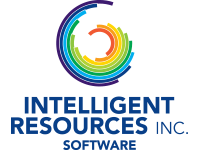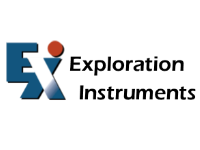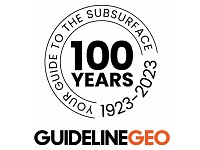Reviewers' Awards
We are well aware nothing can thank the valuable time and efforts reviewers have devoted to the Journal of Environmental and Engineering Geophysics (JEEG); however, the JEEG editorial board tries, as far as it can, to acknowledge and recognize reviewers' fundamental role in the JEEG publication process through the following steps:
1) JEEG is a member of ReviewerCredits. After completing the peer-review, reviewers are invited to automatically transfer their review data to ReviewerCredits, add it to their certified reviews, and assign credits they may use on ReviewerCredits online store. Reviewers can register a free ReviewerCredits account and be ready to earn credits immediately. Find out more here.
2) Based on the following protocol, the top reviewers for each JEEG issue are selected and as appreciations:
2-1) Selected top reviewers are awarded a "Certificate of Outstanding Contribution in Reviewing"
2-2) Selected top reviewers' names and biographies announced in the Editor's foreword of the corresponding JEEG issue and on the JEEG website and social media.
3) The Environmental and Engineering Geophysical Society (EEGS) is proud to award the JEEG Annual Best Reviewer for outstanding contribution to the Journal of Environmental and Engineering Geophysics. The award is presented yearly at Symposium on the Application of Geophysics to Engineering and Environmental Problems (SAGEEP).
Protocol for Evaluating a Review
The Editor(s)-in-Chief and Associate Editors select the top reviewers for each JEEG issue and the JEEG Annual Best Reviewer throughout the following procedure:
a) Associate Editors rate the quality of each review based on a four-point scale (Poor=0 point, below average=1 point; above average=2 points; exceptional=3 points) against four following criteria, which are adapted from the Publons, and report the total points out of a possible 12:
1- Timeliness: The review assignment was completed within the time limit.
2- Clarity: The review was easily read and interpreted by the Editor and authors.
3- Helpfulness: Comments were constructive, relevant, and realistic.
4- Thoroughness: The review gave adequate consideration to all aspects of the paper, including abstract, introduction, methodology, figures, interpretation and presentation of results, ethics, relevance, etc.
b) Editor(s)-in-Chief between reviewers with the highest average rates will select the best reviewer(s) for each JEEG issue.
c) Editor(s)-in-Chief between the best reviewers of a volume select the JEEG Annual Best Reviewer with the highest quantity of reviews after evaluating and comparing their reviews’ quality.
Reviewing – A Necessity for Every Scientific Author
While reviewing papers that are being considered for publication is a necessary duty for every scientific author, it is often seen as a burden. It takes a lot of time to go through new material and catch mistakes, offer suggestions, and improve readability of the manuscript. I would offer this perspective, however, when being asked to review someone’s work: your latest manuscript was likely reviewed by at least three people per version prior to publication. So, if a normal paper goes through one revision cycle prior to acceptance, it has been read six times. In turn, I hope that you are willing to return the favor and provide at least six reviews for each of your articles (whether they were published or not). This balances the load across everyone’s shoulders. Of course, reviewing more than 6x is better for JEEG, so don’t feel like you are completely off the hook.
“your latest manuscript was likely reviewed by at least three people per version prior to publication”
Here is another perspective – the review process is the longest lead item in getting a paper to print (the second longest lead item is the time needed to complete the revision by the author). We on the board of editors are always trying to reduce this time, as time to print can indirectly affect the journal’s impact factor. Tricks that we may impose on reviewers include a shortened time line for providing a review (often three weeks or less), automatic or incessant chaser emails, shotgun approach in finding reviewers (i.e., requesting 5 or more people to review upon receiving the manuscript). So as an editor, if you make the commitment to review, I ask that you fulfill your promise and complete the review on time so that we don’t have to resort to these annoying tricks. Also, if you are asked to review and cannot, please deny the request quickly so that we can find someone else.
Addressing Reviewer’s Fatigue
As a reviewer myself, I go through slumps where I have to take a step back and reduce my commitments to reviewing papers. I hate to do this, as I know that other editors are relying on me. So, I offer some recommendations to help reduce “reviewer’s fatigue”:
- Don’t accept every opportunity for review that comes along. Limit yourself to 2 or 3 outstanding reviews at a time and only accept a new request when an old one is complete
- Don’t look at the review process as a burden. Use the opportunity to learn from fellow scientists.
- Don’t spend too much time on papers that are poorly written. Go to the meat of the paper and determine if the science is actually worthy of publication and offer broad suggestions. State clearly in the review that the writing is poor but the paper has merit.
- If you feel that you cannot conduct a review, offer alternative reviewers to take some of the burden off of you.
- Set a specific time for committing yourself to the review
- Print out the review and take it to appointments, where you know there is a long wait (doctor’s visit, waiting for your flight, commutes).
- Sign up for publons.com and track your progress. Gain imaginary internet points.
- If you run up against the deadline for review, ask for more time if needed. Editors are more than accommodating as they need your review.
- Be constructive. Positivity can have physiological benefits for you.
- If the material is difficult to wade through, ask for help from a colleague. You can do this without jeopardizing the integrity of the review or anonymity of the authors.
- Admit in the review (or as a comment to the editor) where your knowledge is limited and state clearly which areas of the paper were not covered thoroughly
- Divide the review into small chunks. For example, internally commit to completing the introduction on day 1, tackle the methods on day 2, etc.
Tips for New Reviewers
If you are new to the review process and looking for some guidance, below are some items to look for in the manuscript to ensure that it is a proper submission and worthy of print:
- Quickly glance through the article to make sure that all of the pieces of a manuscript are there. Does it have an abstract, introduction, something akin to a methodology, results, conclusion, and references? Other sections may also exist, but there are minimal pieces necessary to ensure scientific communication is being conducted expediently
- Informally check the length. At JEEG, we have two categories to accommodate shorter letters (up to 3000 words and 1-4 figures) or a full article (greater than 3000 words). Word counts aren’t attached to the article, but line numbers usually are. Estimate 20 words per line.
- Quality of the figures, including labeling of axes, clarity in symbology, logical contouring, etc.
- Lots of misspelled words are a clue that the author did not put in the time to ensure a proper submission and there are likely many mistakes within the paper itself
- A sloppy reference section is another clue that the author did not spend time on the details of their work.
- Ensure that the citations and references are up to date. It is OK to reference older papers, but science is about progress. Offer suggestions where you think the author should include relevant work. Suggesting your own work is fine as long as it is not seen to be excessively self-promoting. Use good judgement.
- An abstract should be concise with enough detail to introduce the problem (in one or two sentences), provide the method of analysis, and a meaningful summary of results. This is the first part that any reader will focus their attention, so an abstract can make or break a paper (in terms of continued reading).
- The most difficult aspect of writing a paper is the introduction. There are many elements to the introduction, including setting up the problem and why it is important, investigating what has already been done to address the problem, what aspects may still have uncertainties that should be addressed, and what the paper plans to do to address those uncertainties (or deficiencies). That last part forms the objectives of the paper and every paper needs a clear set of objectives.
- Novelty is important for every scientific peer reviewed paper. Why should it deserve the attention of the reader? What new information is being conveyed in the work? How is it different than the 30 other papers already dedicated to the subject? These are the questions that should be asked of every submission. Ask these difficult questions of the author and make them defend their work.
- There are clear differences between a report and a scientific investigation. We at JEEG only publish science and basic project reports do not meet this criterion. So, look for the rigor and novelty in every paper.
- Ensure that the reader has enough information to make the leaps in logic that the author is asking of them. An over reliance on cited work published elsewhere for setting up the background is not sufficient for a standalone document, especially if the author is relying on documents published in a different language than the target audience. If the reader has to hunt down too many sources to understand where the author intends to go, that is unacceptable. An abridged version of the background may be necessary for their work to be self-standing
- Manuscripts need to be concise. The results section is often where the author wants to present every aspect of analysis for their work. For example, a presentation of every seismic section collected within a large survey may not add to the discussion and one or two sections may be all that are needed to get the point across. Find ways to chop, combine, reduce, or eliminate overly produced results sections.
- The conclusions are where the author brings the reader back to the objectives by basically stating that they have been met. The conclusions should address each objective in some fashion, with enough backup material to remind the reader that those objectives were in fact met.
- No new material should be introduced in the conclusions. For example, a call to a new figure in the conclusion is unacceptable – it should have been introduced earlier. However, a discussion of the implications of the work can be addressed in the conclusions.
- Poorly written manuscripts cannot be published and it is not your job to rewrite a manuscript. However, we all make errors in writing and you providing recommendations on word changes or grammar are within your purview. That being said, as a reviewer I have helped many non-native speakers with their manuscript to bring it up to an acceptable standard for publication. The level of effort put into editing and writing of a manuscript is up to you.
- Lastly, as a personal policy, I attach my name to every review I do. I have had a few nasty, anonymous reviewers of my work and many people online hide behind a veil of anonymity to hurl insults. When I attach my name to a review, I know that I can be confronted at any point and questioned about what I said. Therefore, by adding my name to the review, I am accountable for my actions. This is something you may consider for your own reviews, but is not necessary. If anonymity is important to you, keep it so.
Other peer review resources:
• Nature peer review trial and debate
• Peer Review in Scientific Publishing
• Opinion: Learning from Peer Review
• Peer Review at Science Publications
• How to become good at peer review: A guide for young scientists
• What is peer review?
• A Quick Guide to Writing a Solid Peer Review
• Peer review process and editorial decision making at journals
• The Scientific Peer Review Process and its Limitations
• Peer Review Week 2016: Recognizing experts. Improving peer review.
|

